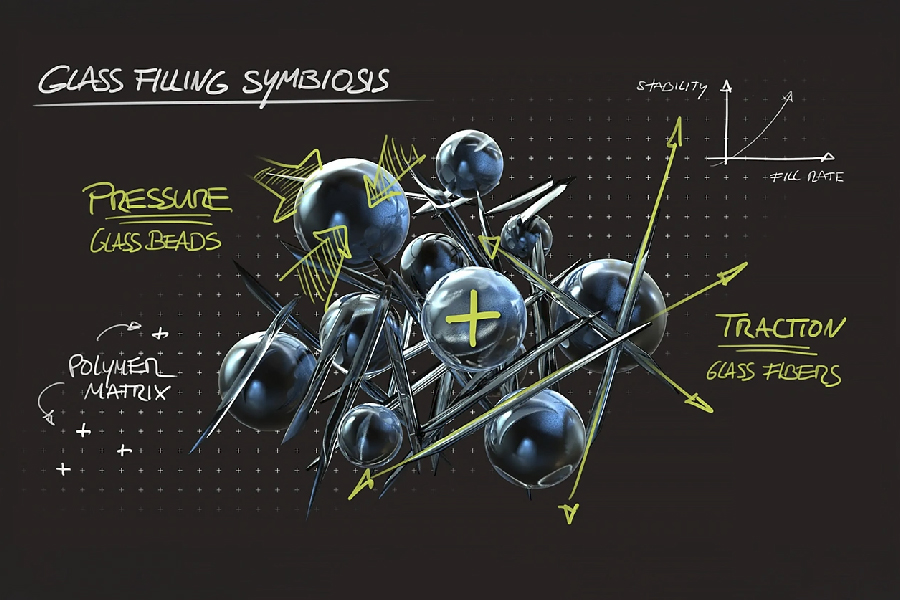Additive manufacturing – the use of 3D printing in an industrial context – has outgrown its infancy. While it was primarily used in the past for research or prototype production, it is now widely applied. The properties of printable materials are constantly evolving. This is where the customized range of glass filler beads from SWARCO Indusferica comes into play. By adding them, the characteristics of 3D printing base materials can be individually modified and ultimately optimized—making a significant contribution to the advancement of additive manufacturing.
Every additive manufacturing process, such as stereolithography, laser sintering, or jet printing, offers different benefits for specific applications. However, the type of material used is restricted by the respective printing technology. Tests to broaden the spectrum of material types that can be used extensively have therefore been the biggest challenge for a long time. They are also the driving force for innovation.
It’s All in the Mix
Composite materials are a proven way to achieve individual physical properties. Ultimately, the new material acts as the sum of all its components. Composite materials have always been a popular way to achieve certain performance characteristics or to solve problems such as loss of dimensional accuracy due to shrinkage. Consequently, composite materials have also proven themselves in the field of additive manufacturing – especially since the introduction of methods such as fused deposition modeling (FDM) or selective laser sintering and the accompanying emergence of light-curing resins with ceramic particles as a printer material in high-temperature applications.
Well Rounded
SWARCO Indusferica now develops tailor-made solutions for additive manufacturing. The range of glass filler beads can be employed in many different printing technologies and improves the properties of the materials used according to individual parameters. Adding them simultaneously increases the hardness and creep behavior of the basic material. Glass filler beads give molded parts a higher density and contribute to reducing material costs, thanks to the highly efficient production process with a small carbon footprint. Both types of glass filler bead are excellent solutions in the use of 3D printed parts.
